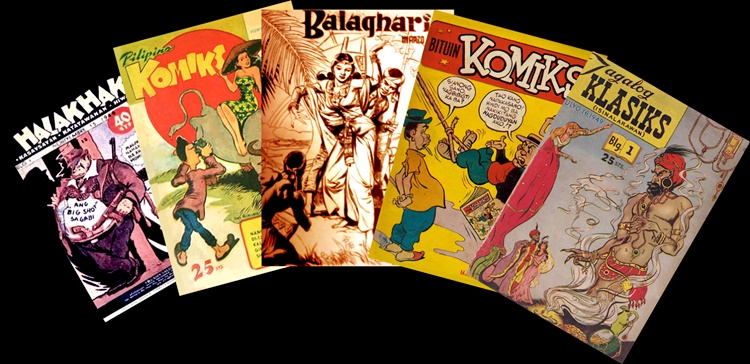A quick look back at the history of Philippine comics. Check out below.
HISTORY OF PHILIPPINE COMICS – Philippine comics have made great impacts and here’s a trip down the history of this.
The comics is a form of a sequence of panels of images. It uses, oftentimes, a combination of text and visual details to express ideas and stories. Textual devices use speech balloons, captions, and onomatopoeia to show dialogue, narration, sound effects, and other information.

And Philippine comics have become widespread in the country from the 1920s to the present. Partially, the PH comics or “komiks” was inspired by American mainstream comic strips and comic books in the early 20th century. The origin komiks rose to prominence during the Spanish–American War. Under the direction of Romualdo Ramos and Tony Velasquez – the pioneers in the industry – comics strips ran in Liwayway magazine like Mga Kabalbalan ni Kenkoy.
Velasquez is considered the father of Filipino comics.
Some komiks were influenced by specific American comics, such as Kulafu and Og (Tarzan), Darna (Captain Marvel), and D. I. Trece (Dick Tracy). PH komiks has existed for many years now and it has provided more than just fun and entertainment since their introduction in 1929.
The largest publisher of komiks in the country is Atlas Publishing and among the icons of creating komiks are Carlo J. Caparas, Vicente Manansala, and Dr. Jose Rizal.
See some famous personalities in the fields and their iconic contributions:
- Mars Ravelo (Darna, Lastikman, Captain Barbell)
- Francisco Coching (Pedro Penduko, Hagibis)
- Larry Alcala (Siopawman, Kalabog en Bosyo)
- Vicente Manansala (Prinsesa Urduja, Alias Kapitan Simangot)
- Carlo J. Caparas (Flavio in Panday, Totoy Magtanggol in Totoy Bato, and Joaquin Apacible in Joaquin Bordado)
The first Filipino comic produced was “The Monkey and the Tortoise” by Jose Rizal published in Truebner’s Record in London in 1889.
However, as years went by, komiks seemed to have been decreasingly consumed by the masses. It started in the 90s when radio and TV came.
READ ALSO:
- 8 Reasons Why Renting Could Be Better Than Owning a Home
- What is the Longest Word in English? (Answer)
What can you say about this? Let us know!
For more news and updates, follow us on Twitter:@philnews_ph Facebook:@PhilNews and; YouTube channel Philnews Ph.
